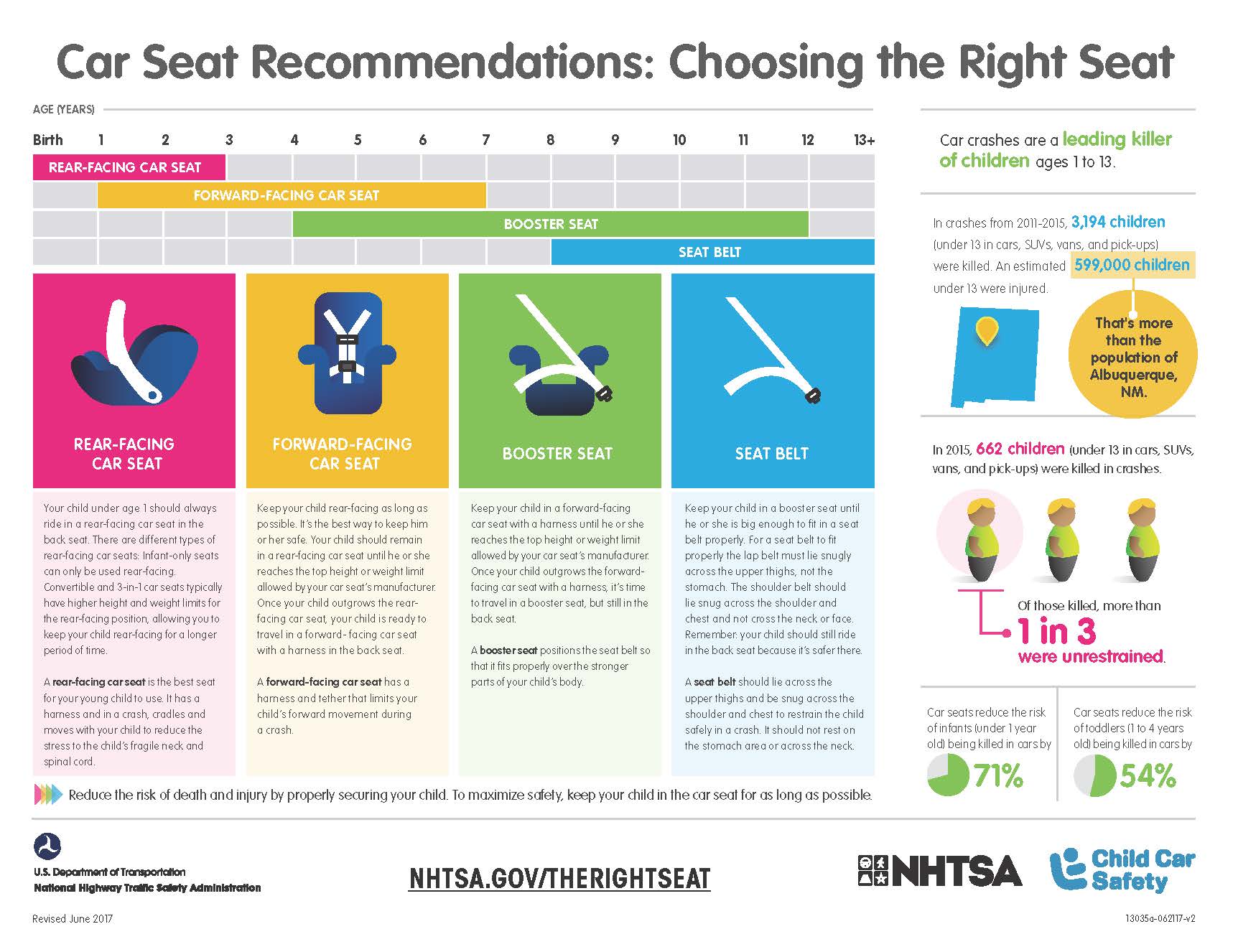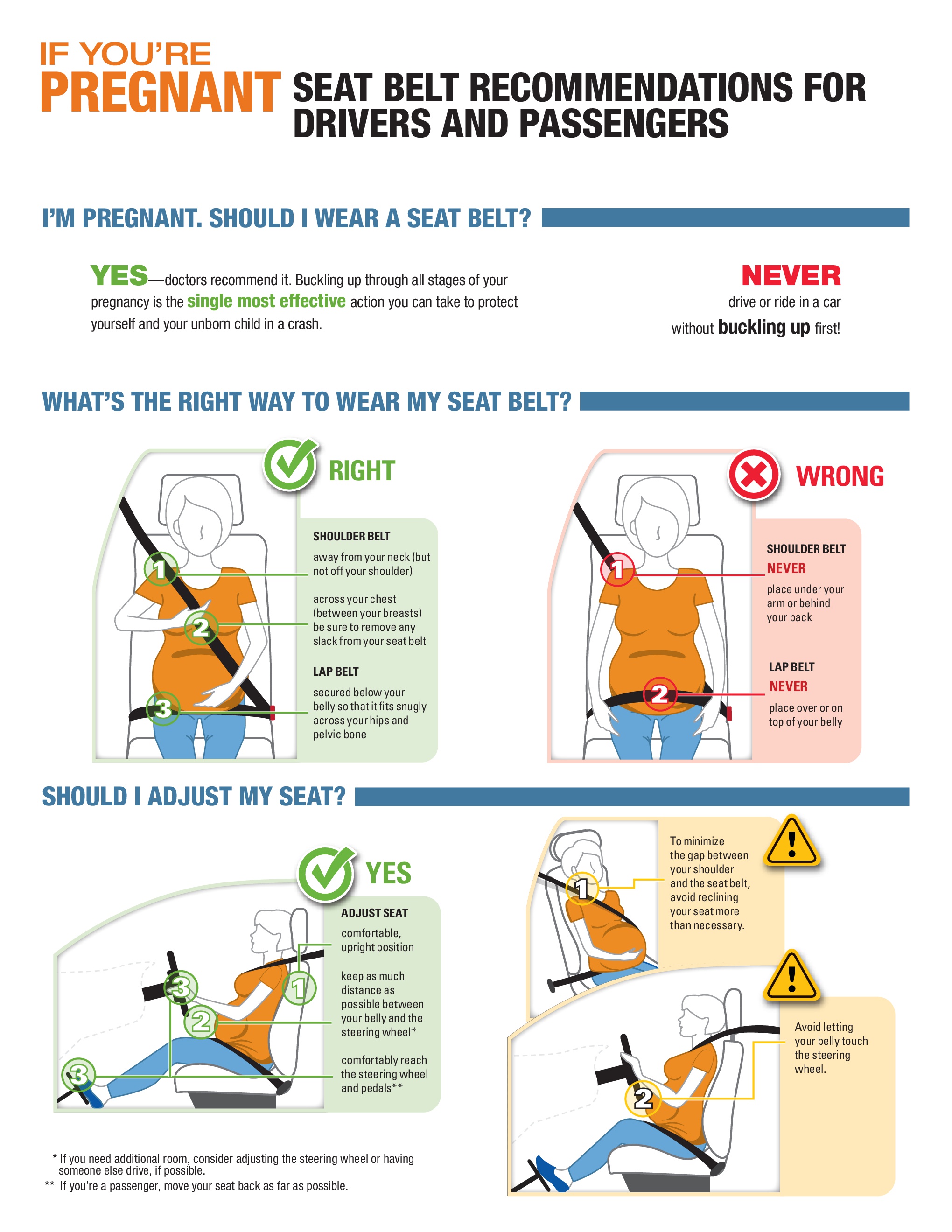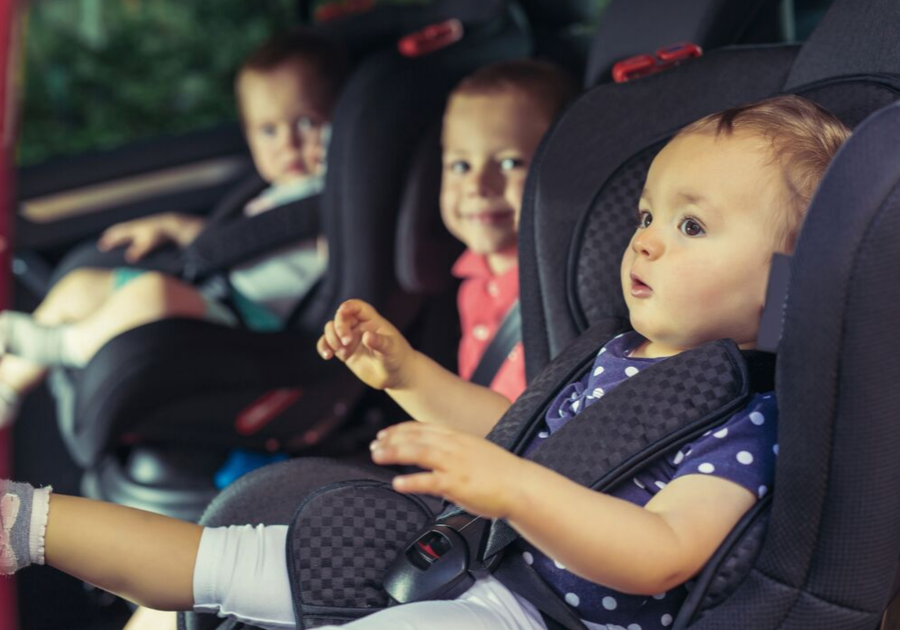Child Passenger Safety Week was September 15-21, 2019. The U.S. Department of Transportation’s National Highway Traffic Safety Administration’s (NHTSA) primary goal for child passenger safety is to make sure all parents and caregivers are correctly using the right car seats (rear-facing car seats, forward-facing car seats, and/or booster seats) or seat belts for their children’s ages and sizes.
Below are a few facts and ways to make sure your child is in the correct car seat!
Local Families, If you would like your child's seat checked, please contact Monira at reBlossom (she is a certified Child Passenger Safety Technician).
 |
Lives lost and injuries
- Car crashes are a leading cause of death for children.
- Every 32 seconds in 2017, one child under the age of 13 in a passenger vehicle was involved in a crash.
- From 2013 to 2017, there were 3,313 children under 13 killed while riding in passenger vehicles. Fatalities decreased in 2017 from 2016, the first decrease since 2014.
- On average, nearly two children under 13 were killed every day in 2017 while riding in cars, SUVs, pickups, and vans.
- From 2013 to 2017, there were 1,161 “tweens” (8 to 12 years old) killed in passenger vehicles.
- In 2017, the <1-to-3 age group had the highest number of fatalities (247, or 37%) among children in passenger vehicles, which is a two-percent increase from 2016. Of those aged 3 and under who were killed, approximately 22 percent were unbuckled.
- In 2017, over one-third (35%) of children under 13 killed in passenger vehicles were not restrained in car seats, booster seats, or seat belts.
- Of the children under 13 involved in crashes in 2017, an estimated 14 percent were injured.
- From 2016 to 2017, the number of children under 13 injured in a crash decreased by an estimated 19 percent.
- Statistically, more crashes occur during “school hours” (during the day, Monday through Friday).
Car seats, booster seats, and seat belts save lives
- In 2017, among children under 5, car seats saved an estimated 312 lives. A total of 371 children could have survived if they had been buckled up 100-percent of the time.
Car seats work best when used correctly
- In passenger cars, car seats reduce the risk of fatal injury by 71 percent for infants and by 54 percent for toddlers. For infants and toddlers in light trucks, the corresponding reductions were 58 percent and 59 percent, respectively.
- Most parents are confident that they have correctly installed their child’s car seat, but in most cases (59%) the seat has not been installed correctly.
- According to NHTSA data, in 2015, about 25.8 percent of children 4 to 7 were prematurely moved to seat belts, when they should have been riding in booster seats.
Remember
- Remember to read and carefully follow the installation instructions included with a car seat, as well as the vehicle owner's manual. Failure to do this can lead to incorrect installation, exposing a child passenger to the risk of injury or death in a crash.
- All children under 13 should always ride in the back seat.
- Tethers should always be used for forward-facing car seats.
 |



